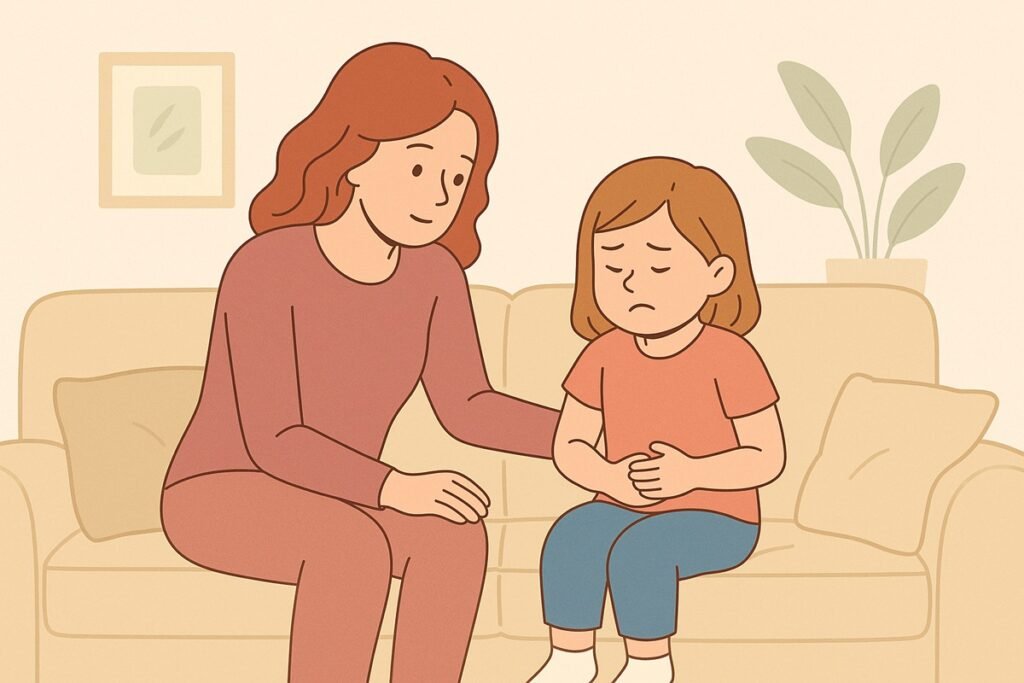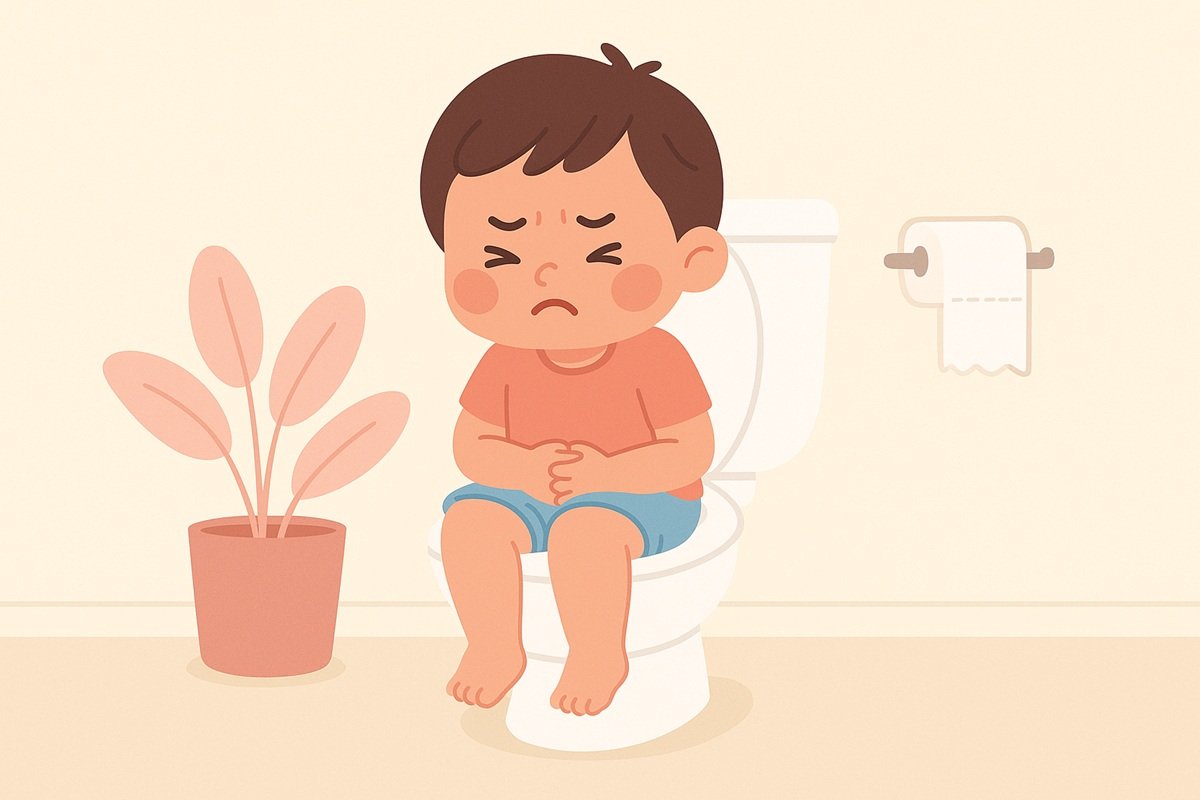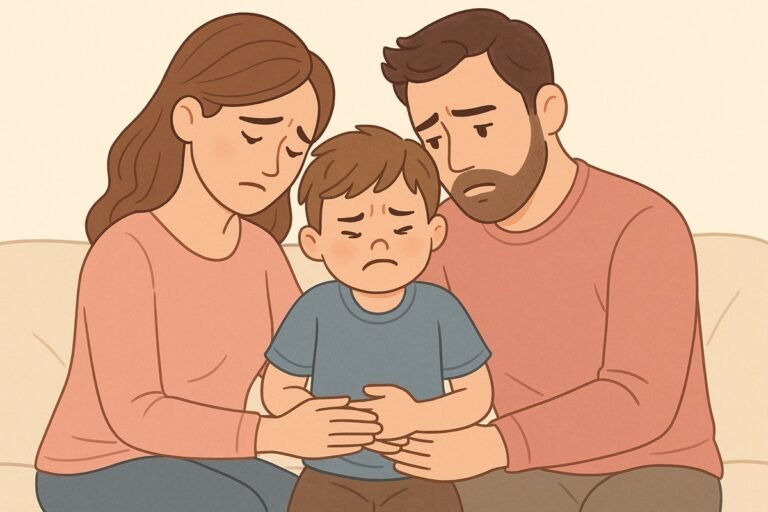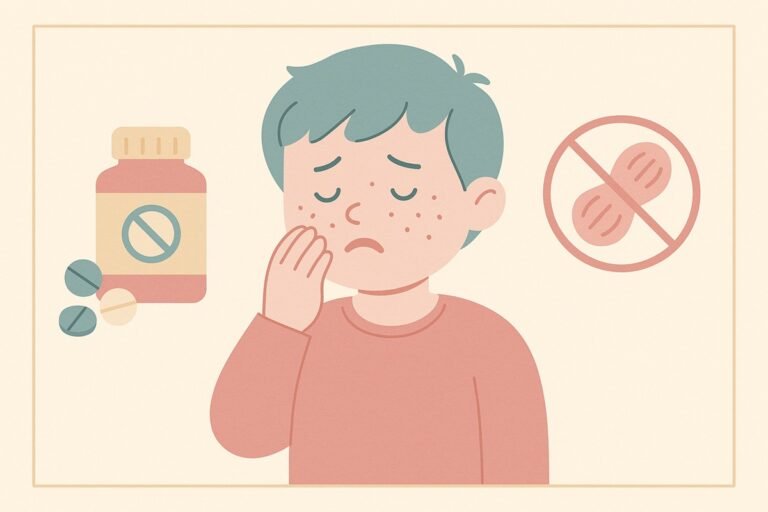Disclaimer: This article reflects the professional opinion of a licensed physician with experience in pediatric care. It is not a substitute for personalized medical consultation. All medications, interventions, or healthcare decisions must be supervised by qualified medical personnel. Always consult your pediatrician regarding your child’s individual health needs.
Table of Contents
Introduction: Why Constipation Matters
Every parent knows the relief of a peaceful diaper change or an independent bathroom trip. But when your child starts straining, avoiding the toilet, or complaining about tummy aches, it’s time to take a closer look. Constipation is a common issue in children of all ages and can significantly impact their comfort, mood, and even long-term health if ignored.
While it’s often temporary and harmless, chronic or untreated constipation can lead to complications that every parent should be aware of.
This guide simplifies the complex nature of constipation using practical language and medically sound advice – because helping your child feel better shouldn’t be confusing.
What Is Constipation in Children?
Constipation in children refers to infrequent, hard, or painful bowel movements.
While bowel habits vary from child to child, constipation is generally suspected when a child:
- Passes fewer than three bowel movements per week
- Experiences hard, dry, or pellet-like stools
- Has difficulty or pain during bowel movements
- Holds in stools to avoid discomfort
- Occasionally passes small amounts of liquid stool or soiling, which may indicate a blockage
It’s important to recognize that constipation is not just about the number of bowel movements. The consistency of stool, the effort required, and the associated discomfort are equally important indicators.
How Can Parents Recognize Constipation?
Constipation can sometimes be subtle, especially in younger children who cannot express themselves well.
Look for these signs:
1. Abdominal Discomfort or Bloating
Children may complain of stomach aches, especially around the navel or lower abdomen.
2. Changes in Behavior
Irritability, loss of appetite, reluctance to play, or sudden changes in sleep can all be linked to stool retention.
3. Stool Withholding Behavior
Preschool and school-aged children might resist the urge to defecate because of past painful experiences.
You might see:
- Crossing legs
- Standing on tiptoes
- Clenching buttocks
- Hiding in corners
4. Stool Soiling (Encopresis)
This is when liquid stool leaks around a hard mass in the rectum and soils the underwear. It’s often mistaken for diarrhea but is actually a sign of significant constipation.
5. Blood on the Stool or Toilet Paper
Small cracks in the anal skin (fissures) can cause bleeding during hard bowel movements. If the bleeding is significant or persistent, medical evaluation is essential.
When Should Parents Act?
Mild cases of constipation in children may resolve with minor dietary or routine adjustments.
However, it’s time to consult a pediatrician if you observe:
- No bowel movement for more than 5-7 days
- Persistent painful stools or straining
- Visible blood in stool repeatedly
- Frequent stool soiling
- Abdominal swelling or persistent vomiting
- Weight loss or poor growth
- Refusal to eat due to discomfort
Don’t wait for the problem to become chronic. Early intervention helps avoid complications and prevents the fear-pain-avoidance cycle many children fall into.
When Is Constipation in Children a Red Flag?
Most childhood constipation is functional, meaning that there is no underlying disease. But in some cases, constipation could be a sign of something more serious.
Parents should be aware of the following red flags:
1. Onset Before One Month of Age
Constipation in newborns may suggest congenital issues like Hirschsprung’s disease, a condition where nerve cells are missing in part of the bowel.
2. Failure to Pass Meconium Within First 48 Hours of Life
This may also indicate a congenital abnormality.
3. Severe Abdominal Distension or Vomiting with Constipation
These could be signs of bowel obstruction.
4. Neurologic Symptoms
Weak legs, unusual reflexes, or abnormalities in the lower back may suggest a spinal cord issue affecting bowel control.
If any of these signs are present, urgent pediatric assessment is required.
How to Distinguish Between Normal and Pathological Constipation

Most constipation in children is functional, often triggered by diet changes, potty training stress, or withholding due to fear of pain.
This is different from organic or pathological causes, which may include:
- Anatomic issues such as Hirschsprung’s disease and anal stenosis
- Neurologic conditions such as spinal cord anomalies
- Metabolic/endocrine disorders such as hypothyroidism and celiac disease
- Medication side effects such as iron supplements and antiepileptics
A pediatrician may conduct a thorough exam, and in selected cases, recommend tests like abdominal X-rays, blood work, or referral to a pediatric gastroenterologist.
Home Remedies for Constipation in Children That Actually Work
Parents can often manage mild cases of constipation at home using safe, proven methods:
1. Increase Fluid Intake
Encourage water throughout the day. Limit sugary drinks and avoid excessive dairy.
2. Add High-Fiber Foods
Introduce fruits (prunes, pears, and apples), vegetables, whole grains, and legumes. Start gradually to avoid bloating.
Related: 20 Tips for Parents of Picky Eaters
3. Encourage Physical Activity
Exercise helps stimulate bowel movements. Let toddlers crawl, jump, or play. Limit screen time.
4. Establish Toilet Routine
Have your child sit on the toilet for 5-10 minutes after meals. Make it fun and non-pressuring. Use a footstool to support proper posture.
5. Build a Reward System
Positive reinforcement works better than punishment. Offer stickers or verbal praise for sitting on the toilet, even if there’s no bowel movement.
Approved Constipation Medications: What’s Safe for Kids?
If home remedies fail, your pediatrician may recommend medications. Never give laxatives or enemas without medical guidance, especially in young children.
Medications approved for use in children include:
1. Osmotic Laxatives: First-Line in Most Cases
rThese draw water into the stool, making it softer and easier to pass.
- Polyethylene Glycol (PEG 3350): Safe, tasteless powder mixed with water or juice. Effective for both short-term and long-term use. Recommended by the National Institutes of Health (NIH).
- Lactulose: A sweet syrup that softens stool. It may cause gas or cramping initially.
2. Stool Softeners
Stool softeners, such as docusate sodium, help moisten hard stools.
3. Stimulant Laxatives: Used with Caution
Stimulant laxatives, like senna or bisacodyl, promote bowel contractions. These are not first-line for routine use in children but may be needed for severe cases under supervision.
4. Rectal Interventions: Enemas or Suppositories
Glycerin suppositories are sometimes used in infants for quick relief. Enemas may be needed in severe impaction but should only be administered under medical direction.
Always follow the pediatrician’s dosing instructions. Some children may need a short clean-out period followed by maintenance treatment for weeks or even months to restore healthy bowel habits.
Prevention of Constipation: Setting Up for Regularity
Once constipation resolves, the goal is to prevent recurrence.
The most effective ways to do that are:
- Keep fiber and hydration consistent
- Avoid over-reliance on dairy, especially cheese
- Regular toilet time after meals
- Avoid shaming or pressure during toilet training
- Communicate with teachers or daycare to allow bathroom access
Educate older children on the importance of responding to body signals and not holding stool due to fear or embarrassment.
Special Note on Constipation in Babies
Infants have different bowel habits than older children. Some breastfed babies may go several days without a bowel movement and still be normal – as long as the stool is soft when passed and the baby is feeding and growing well.
Constipation in babies may present as:
- Hard pellet-like stools
- Straining for more than 10 minutes without passing stool
- Irritability or arching of the back
- Blood in the stool
Mild cases can sometimes be managed by:
- Gently massaging the tummy in clockwise circles
- Bicycling the legs
- Offering a small amount of water or prune juice (in babies over 6 months)
Always consult a pediatrician before trying any remedy in infants, especially if younger than 6 months.
Conclusion: Constipation Is Common, But It Shouldn’t Be Ignored
Constipation is one of the most frequent complaints seen in pediatric clinics, and while it’s rarely dangerous, it can significantly affect a child’s well-being and development if left untreated. Understanding the signs, knowing when to act, and feeling confident about both home strategies and medical options gives you – the parent – the upper hand.
If you’re ever unsure, remember that pediatricians deal with this all the time – and no question is too small when it comes to your child’s comfort and health.







